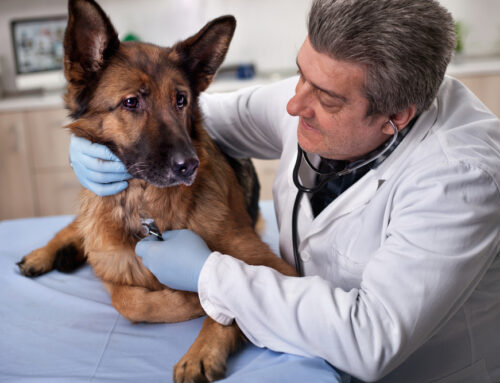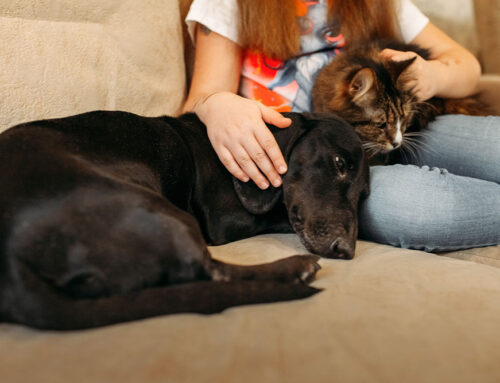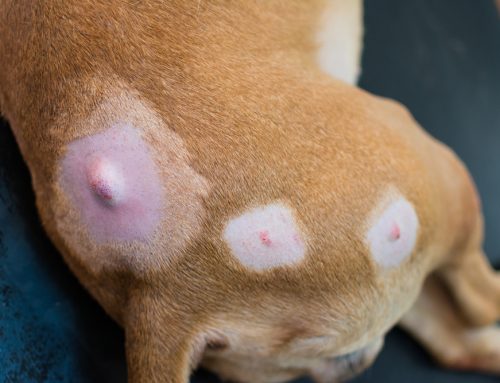If your veterinarian recommends a new diet for your pet or you simply want to change brands, you must be careful about introducing new food to prevent your furry pal from developing gastrointestinal (GI) upset. Our Guam Pet Hospital team knows how distressing diarrhea can be for both you and your pet , and we explain the link between your pet’s diet change and diarrhea. Learn how you can help prevent your pet from developing this problem or address their signs if they experience GI upset.
Why do diet changes cause diarrhea in pets?
Most pets eat the same food every day, and an abrupt change in their diet doesn’t allow their GI tract time to adjust, typically resulting in signs such as diarrhea, vomiting, and excess gas. The GI system’s digestive enzymes are unable to process the new diet’s components fully, which can happen if you intentionally change their food or if they ingest off-limits food.
How do I treat my pet’s diarrhea caused by a diet change?
When caused by a diet change, most pets’ diarrhea resolves without medical intervention. To stop your pet’s diet-induced diarrhea, follow these treatment tips:
- Withholding food — Stop feeding your pet after they develop diarrhea. To allow their GI tract to rest, your pet should fast for 12 to 24 hours.
- Providing water — Diarrhea can quickly lead to dehydration, so ensure your pet has access to fresh, clean water at all times.
- Offering at-home remedies — In some cases, offering plain cooked rice and plain scrambled eggs may help your pet’s diarrhea resolve more quickly.
- Avoiding medications — Many common medications used to treat diarrhea in humans are dangerous for pets, so avoid administering any medication to your pet without consulting our Guam Pet Hospital team.
- Returning to their previous food — Once your pet’s diarrhea resolves, begin feeding them their previous diet.
How do I change my pet’s diet without causing diarrhea?
To change your pet’s diet appropriately, you should introduce the new food gradually over about seven days. To prevent your pet from developing GI upset when introducing a new food, follow these diet-transition tips:
- Days one and two — Feed 25% of the new diet and 75% of the old diet.
- Days three and four — Feed 50% of the new diet and 50% of the old diet.
- Days five and six — Feed 75% of the new diet and 25% of the old diet.
- Day seven — Feed 100% of the new diet.
When should I seek veterinary care for my pet’s diarrhea?
Although you may have introduced a new food to your pet, they can develop diarrhea for many reasons other than diet change. Make an appointment with our Guam Pet Hospital team if your pet exhibits the following signs:
- The diarrhea persists for more than two days.
- Your pet is a puppy, kitten, or senior.
- You know or suspect your pet has ingested a toxin.
- Your pet is exhibiting additional signs such as fever, lethargy, inappetence, bloating, or pain.
- Your pet has blood in their fecal matter.
- Your pet has a pre-existing health condition.
- Your pet is taking medication, especially nonsteroidal anti-inflammatories (NSAIDs).
How can I prevent my pet’s diet change from causing diarrhea?
When you transition your pet to a new food, you can help them avoid developing diarrhea. To decrease your pet’s diet-change diarrhea risk, follow these tips:
- Transitioning correctly — When switching your pet’s food, follow our diet-transition schedule.
- Avoiding table scraps — Be careful feeding your pet table scraps. You should consider table scraps as being a sudden change to your pet’s diet. Many common foods that people eat are toxic to pets, and fatty foods may trigger pancreatitis, a dangerous condition.
- Sealing your garbage — Store your garbage in sealed containers, so your pet can’t go dumpster diving.
- Keeping counters clear — Store all food items behind doors or in sealed containers to avoid tempting your pet to counter surf.
Could a food allergy be causing my pet’s diarrhea?

Pets’ food allergies most commonly cause itchy skin and ears, but they can also lead to GI upset. Affected pets are most often allergic to their food’s proteins such as beef, poultry, dairy, and eggs. Before allergy signs manifest, a pet has typically been eating the specific food for months or years.
The only way to diagnose a food allergy is to put your pet on a food elimination trial for at least 8 to 12 weeks. This involves feeding your furry pal only a hypoallergenic diet, which means no other foods, treats, table scraps, foraging, supplements, or chewable vitamins and parasite preventives. If your pet’s signs resolve, you can challenge them by reintroducing their previous diet’s individual ingredients to determine their allergen. Once the offending food is identified, you must only feed your pet a diet that does not contain this ingredient. Hypoallergenic diet options include:
- Veterinary novel protein diet — These prescription diets contain novel proteins, such as bison, kangaroo, rabbit, and crocodile, that your pet has never eaten.
- Veterinary hydrolyzed protein diet — The protein molecules in these prescription diets have been broken down to such an extent that your pet’s body doesn’t recognize them.
- Home-prepared novel protein diet — A veterinary nutritionist must formulate a home-prepared diet, and you must follow their instructions scrupulously to ensure your pet receives adequate nutrition.
Food allergies aren’t curable, and a pet who has a food allergy often develops an allergy to other ingredients. Many pets who have a food allergy also develop other allergy types such as atopy (i.e., environmental allergies) or flea allergy dermatitis (FAD). If your pet has allergies, our veterinary team must monitor your furry pal’s condition regularly so we can change their treatment as needed.
If you are concerned about your pet’s diarrhea or you think they may have a food allergy, schedule an appointment with our Guam Pet Hospital team.








Leave A Comment